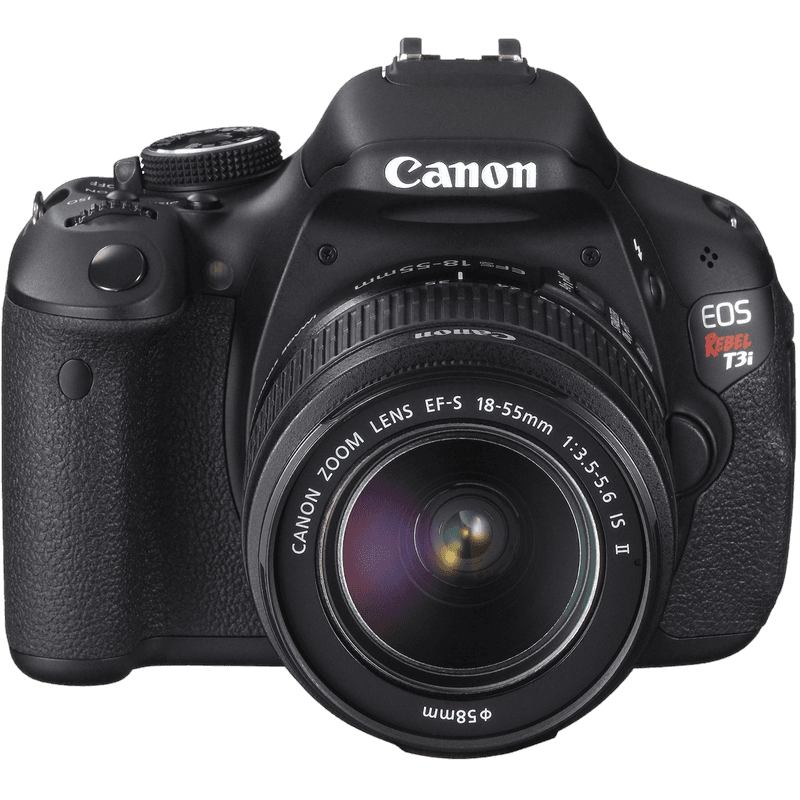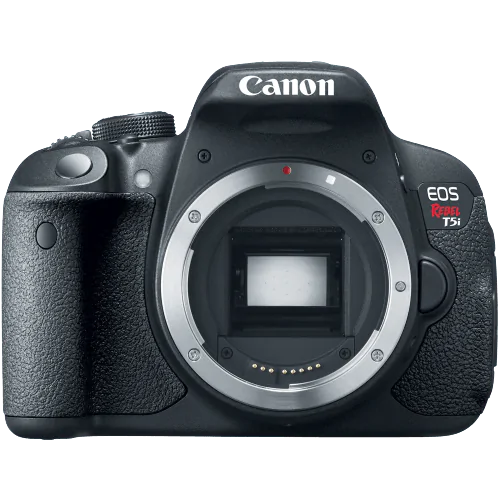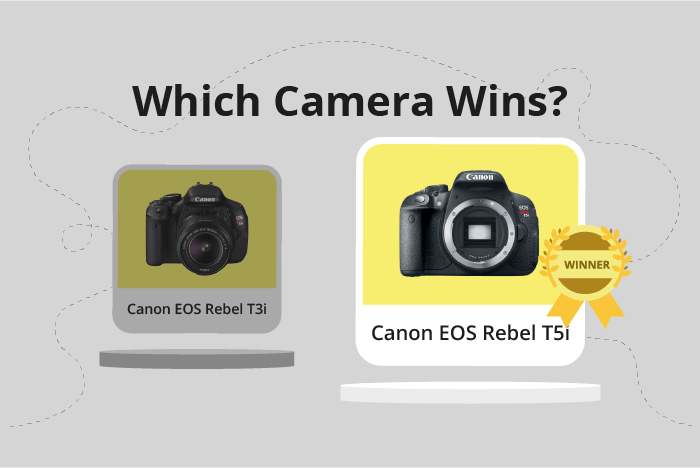Canon EOS Rebel T3i / 600D vs EOS Rebel T5i / 700D Comparison
Canon EOS Rebel T3i / 600D

Canon EOS Rebel T5i / 700D

The Canon EOS Rebel T5i/700D comes out on top with a score of 44/100, while the Canon EOS Rebel T3i/600D scores 40/100. Both cameras share similarities as DSLR cameras, having been released in 2011 and 2013 respectively, and they have almost identical sizes, with the T5i being just 1mm thinner. However, the T5i is slightly heavier at 580g compared to the T3i’s 570g.
The T5i/700D has a better overall score, which is likely due to its more recent release and improved features. Additionally, it had a lower launch price of $750 compared to the T3i’s $850. The T3i/600D, on the other hand, has a slight advantage in weight, making it marginally more portable.
Taking all these factors into account, the Canon EOS Rebel T5i/700D emerges as the better camera, offering a higher score and more advanced features at a lower price. The T3i/600D’s only advantage is its slightly lighter weight, but this is not enough to outweigh the T5i’s benefits.
Canon EOS Rebel T3i / 600D vs EOS Rebel T5i / 700D Overview and Optics
The Canon EOS Rebel T5i / 700D emerges as the winner in our comparison of optics, despite both cameras scoring 40/100. Let’s examine the similarities and differences between the two cameras’ specifications to understand their optical performance.
Both the Canon EOS Rebel T3i / 600D and the Canon EOS Rebel T5i / 700D share common specifications, including 18 megapixels, CMOS sensor type, APS-C sensor size, Canon EF-S lens mount, and the absence of image stabilization. These common features contribute to their equal scores in optics.
However, the T5i / 700D outperforms the T3i / 600D in certain aspects. The T5i / 700D has a faster shooting speed of 5 frames per second, compared to the T3i / 600D’s 3.7 frames per second. This advantage allows the T5i / 700D to capture fast-moving subjects more effectively, providing better results in action photography. Additionally, the T5i / 700D utilizes a more advanced image processor, the Digic 5, compared to the T3i / 600D’s Digic 4. This improvement results in better image quality and faster processing times.
On the other hand, the T3i / 600D possesses a higher DXOMARK score for the sensor, 65 versus the T5i / 700D’s 61. This means that the T3i / 600D has a slightly better sensor performance, potentially resulting in improved image quality in certain shooting conditions.
Despite these differences, the similarities between the two cameras’ specifications result in an equal score for optics. The T5i / 700D’s faster shooting speed and improved image processor make it the better choice for action photography. However, the T3i / 600D’s higher DXOMARK score indicates that it might perform better in some situations. Ultimately, the choice between these two cameras depends on the specific needs and preferences of the photographer.
Canon EOS Rebel T3i / 600D vs EOS Rebel T5i / 700D Video Performance
When comparing the video capabilities of the Canon EOS Rebel T3i / 600D and the Canon EOS Rebel T5i / 700D, both cameras have the same score of 43 out of 100. This means that neither camera outperforms the other in terms of video features and quality.
Both cameras have several specifications in common. They both offer Full HD video resolution with maximum dimensions of 1920 x 1080. Additionally, they share the same maximum video frame rate of 30fps. Neither camera has built-in time-lapse functionality.
Despite having the same score, there are no specific areas where the Canon EOS Rebel T3i / 600D is better than the Canon EOS Rebel T5i / 700D or vice versa. Their video capabilities are identical, which means that users can expect the same level of performance and quality when recording videos with either camera.
Given the similar video capabilities, potential buyers should consider other factors when choosing between the Canon EOS Rebel T3i / 600D and the Canon EOS Rebel T5i / 700D. These factors may include price, additional features, and ease of use. In terms of video performance, however, both cameras are on equal footing, and users can expect a consistent experience regardless of their choice.
Canon EOS Rebel T3i / 600D vs EOS Rebel T5i / 700D Features and Benefits
The Canon EOS Rebel T5i / 700D comes out on top with a feature score of 57/100, compared to the Canon EOS Rebel T3i / 600D, which has a score of 44/100. Both cameras share some common specifications, including a 3-inch screen size and a screen resolution of 1,040,000 dots. Additionally, neither camera has GPS, WIFI, or Bluetooth capabilities.
The T5i / 700D surpasses the T3i / 600D with its touchscreen feature, allowing users to navigate menus and settings with ease. Furthermore, both cameras have a flip screen, which is useful for capturing images from various angles and for shooting videos. The T5i / 700D’s superior feature score results from its touchscreen advantage.
On the other hand, the T3i / 600D does not have any distinct features that make it better than the T5i / 700D. Despite having a flip screen like the T5i / 700D, its lack of a touchscreen makes it less user-friendly.
In comparing these two cameras, the Canon EOS Rebel T5i / 700D clearly outshines the Canon EOS Rebel T3i / 600D due to its touchscreen feature. The T5i / 700D’s higher feature score reflects its enhanced functionality, making it a better camera choice for users seeking a user-friendly and versatile DSLR camera.
Canon EOS Rebel T3i / 600D vs EOS Rebel T5i / 700D Storage and Battery
The Canon EOS Rebel T3i / 600D and the Canon EOS Rebel T5i / 700D are tied in storage and battery with a score of 24/100. Both cameras have one memory card slot, accepting SD, SDHC, and SDXC cards. Their battery life is identical, providing 440 shots per charge, and they use the same LP-E8 battery type. Neither camera has USB charging capabilities.
Despite the equal score, neither camera outperforms the other in storage and battery specifications. The shared features of memory card compatibility and battery life provide users with similar storage options and shooting durations. No advantages are found in either camera regarding these aspects.
Given the identical storage and battery scores and specifications, the Canon EOS Rebel T3i / 600D and the Canon EOS Rebel T5i / 700D offer the same performance in these areas. Users can expect equal storage capabilities and battery life from both cameras, making the decision between them reliant on other factors and features.
Alternatives to the Canon EOS Rebel T3i / 600D and EOS Rebel T5i / 700D
Are you still undecided about which camera is right for you? Have a look at these popular comparisons that feature the Canon EOS Rebel T3i / 600D or the Canon EOS Rebel T5i / 700D:

